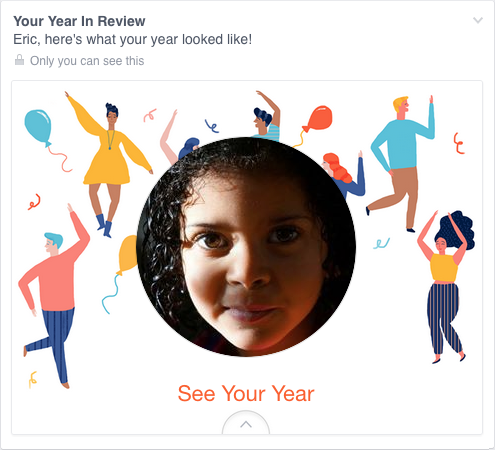May 2014
“You realize this CT could push us out of the study.”
“Yes.”
“Are you ready to face whatever we find out?”
“Of course I’m not ready. But I will. We take it a day at a time. Today she’s okay.”
“Today she’s okay. Except she isn’t.”
“I know, Kat, but maybe it’s a side effect of the p28. Or maybe it’s tumor infiltration, or a virus, or who knows what. She’s been through a lot these past few months. Whatever’s happening, we’ll find out what it is and deal with it.”
August 2012
“God, what a week!”
“Yeah.”
“It’s not enough that Rebecca nearly killed herself choking on that gum-ball right before we left for vacation. Thank God Jen was right there to give her the Heimlich! I don’t want to think about what would have happened if she’d aspirated with nobody around. And the way she was wailing after the car hit us, I was sure she was headed to the hospital.“
“Me too. Which I have to say seemed weird, because she was sitting furthest from the impact.”
“I thought maybe the energy from the impact somehow bounced around the car and focused where she was sitting, or maybe she wasn’t buckled in tightly enough. I thought a lot of things.”
“Yeah. At least I managed to speed up enough that the impact was behind Joshua instead of right into his door. I’m not sure the van would be drivable if I hadn’t, and I’m not sure that he’d be out of the hospital altogether. I just wish I could’ve sped up sooner, or faster, or something.”
“You did great. Nobody was hurt. We couldn’t ask for much more.”
“I know. Still. I’m not going to soon forget how I felt when I thought Rebecca was seriously hurt. Like you said, she sounded like she was.”
“Sometimes I think her guardian angel either gets sloppy or works overtime in August. Remember that bad allergic reaction she had to the sunblock last year?”
“Yes, and I remember how hyper the Benadryl made her.”
“All this stuff that’s happened to her — I just picture her guardian angel sitting in a bar every August going, ‘I kept her safe, now gimme another one!’”
“At least she’ll have some great stories to tell in high school, when they play ‘who had the worst vacation’.”
April 2012
“I can’t believe these things are back.”
“At least this time they aren’t as widespread, and they can be removed laparoscopically. It was hard enough when you were bedridden for two months when we had only two kids. With three now, I think I’d go insane. Especially given Joshua’s disinterest in sleep.”
“I can’t figure out how a baby that young is so opposed to sleep. He’ll never remember this, and to Carolyn this is just another round of Mommy-in-the-hospital. But Rebecca is so worried. Have you seen how clingy she’s gotten with me since we told her?”
“She’s still pretty young. She’ll adjust quickly.”
“How do we help her do that?”
“The same way we did with Carolyn. We tell her a hospital is where people go to get better, and that Mommy has bad rocks in her belly that the doctors will take out and then Mommy will get better.”
“You know she’s going to ask us if every rock we go past is a good rock or a bad rock.”
“That’s okay. She’ll figure it out soon enough, and she’s too little to understand things like tumor growth and how one kind of tissue is good but another is bad. And one day, when she grows up, she’ll probably chuckle about how she thought Mommy had actual rocks in her belly.”
July 2009
“How’s Kat doing?”
“She’s feeling a little bit better every day. The infection she got in her incision really set her back, but that finally seems to be cleared up. We’re hoping that she’ll be able to start walking unassisted and maybe get downstairs in the next week or two.”
“How are the girls?”
“They’re fine. I think Carolyn enjoys taking her mom snacks in bed, and we sometimes have family dinner up there. It was a little scary for her at first, but she’s young and resilient. Rebecca is still Rebecca, crawling and cruising like crazy.”
“You know, I really thought you’d be a widower by now.”
“What? Why?”
“When we saw those MRIs showing the mass, and then they delayed her surgery for an oncologist to be on hand, I was convinced it was malignant and that she’d die from it and leave you all alone with the girls. I was sure.”
“Ah. Well, fortunately, it wasn’t.”
“Seriously. It was a pretty terrible first birthday present for Rebecca, though, to have her party postponed and her mom in the hospital.”
“I suppose, but she’s so young that she’ll never remember any of it. Besides, she’ll have plenty more birthdays.”
June 2008
“I know we’ve waited a long time to be placed, but we can’t take a child with cystic fibrosis if we’re not ready to deal with everything that entails.”
“What does it mean if she has CF?”
“A lot of respiratory problems, lots of lung infections, possible lung transplants. Bottom line? She’d probably die from it in her teens or early twenties.”
“…I don’t know if I can do that.”
“This could be nothing. We’ll know by Monday whether she has it or not.”
“If she does, I — I have to turn down placement, Kat. I’m sorry. I don’t think I can go into an adoption knowing that it’s time-limited. I know we’ve been waiting more than two years, but I don’t know if I could survive one of our children dying young. I’d rather wait longer, and take placement of another baby, than face that.”
“You know some people would ask what you’d do if we’d been able to get pregnant and given birth to a child with CF.”
“And I’d tell them that I’d love and care for that child. But we can’t get pregnant, and one of the side effects of that inability is that we get the ability to choose which child we take into our lives. I make no apology for exercising that choice to maximize our chances of having the best outcome. We’ve done it before, and if need be, we’ll do it again. I don’t think I can choose to adopt a child with a life-span I know ahead of time to be limited. Maybe I’m a coward for that, and maybe not, but that’s where I am.”
March 2008
“I don’t get it. Why do we have to renew our homestudy?”
“They’re only good for two years. State law says you have renew if you’re still waiting.”
“Yes, thank you, I know that. I mean, why are we still waiting? After two years? We only waited a few months for Carolyn.”
“I know.”
“We’re great parents. Why are we waiting so long? What’s wrong with us?”
“Nothing. You know that. It’s just, sometimes you wait.”
“Two years, though. Sometimes I feel like we’re never going to get picked.”
“Sometimes I feel the same way, but you know that if we wait long enough, eventually we’ll be at the top of the list. And then even if no birthparents actively pick us, we’ll get placed if the birthmother says she doesn’t care who gets the baby.”
“Wouldn’t you rather be picked? Instead of just placed by default?”
“Honestly, I’m fine with it either way. I know it’s been a long time. I know it feels like forever. But compared to how long we’ll get to be with that child, it’s really not very long at all. They’ll be our child for the rest of our lives. We’ll get to love them for decades. Compared to that, what’s a couple of years?”
October 2003
“I talked to Adoption Circle today and we’re back on the waiting list.”
“Okay, great.”
“They asked how we were doing.”
“What did you tell them?”
“That we were doing okay, and we were ready.”
“Well, it has been four months since Mom died. It’s sad, but we can’t put our lives on hold forever.”
“That’s basically what I told them.”
“You know, given Mom’s family’s history of cancer, it’s probably for the best that we’re adopting — I wouldn’t want to risk passing that on to our kids. I just hope I live long enough to see them grow up.”
October 1998
As the funeral service for Kat’s aunt Judy ended, the sun slipped behind a bank of clouds. The mourners began to disperse, leaving the family to stand in the chill October air, talking quietly as they comforted Judy’s husband and children. Off to one side, Judy’s mother, Kat’s grandmother, stood stiff and drawn next to me, her eyes glistening with tears as she stared off at the horizon. I had already expressed condolences and couldn’t think of anything else to say, so I just stood there. After a few moments, she looked at the grave, then looked at me, and shook her head.
“It’s a terrible thing for a parent to bury a child,” she said. “Terrible. Nobody should ever outlive their child.”

